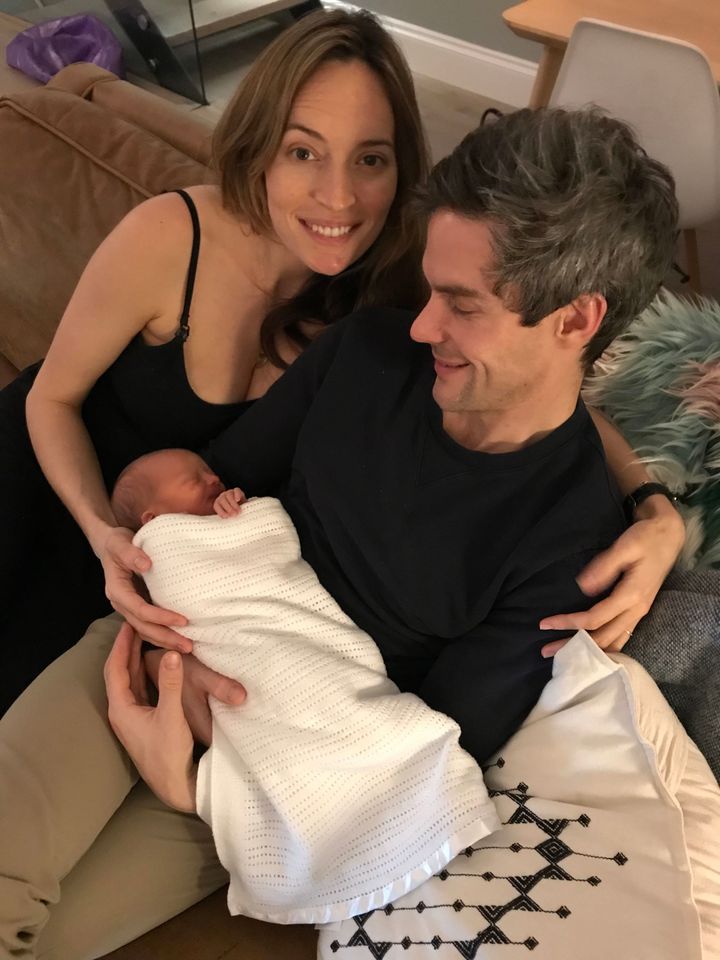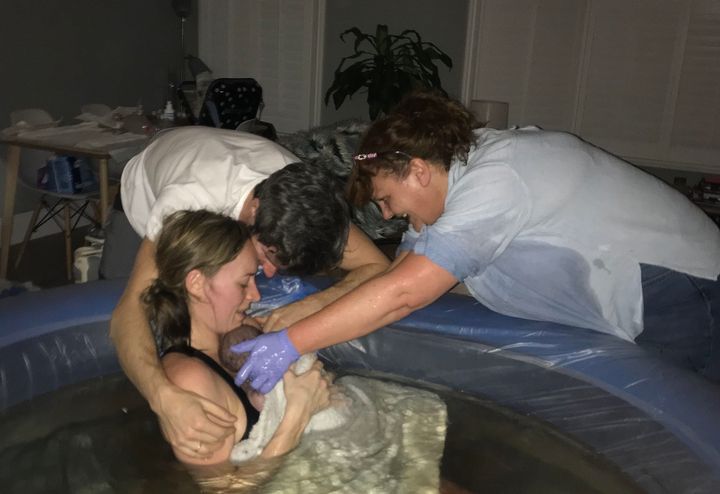Speculation grows about whether or not the Duchess of Sussex has had a home birth – she would have followed in the footsteps of the Queen if she did. All four of the monarch’s children were born in Buckingham Palace or Clarence House – as viewers of The Crown will know.
Home birthing currently accounts for just 2% of births in England and Wales, although NCT statistics suggest many more women are interested in it as an option, and might choose it if they felt it was entirely up to them.
The NHS advises that where you give birth depends “on your needs, risks and, to some extent, on where you live”. For a woman considered ‘low risk’, a home birth is completely viable. “Wherever you choose, the place should feel right for you. You can change your mind at any point in your pregnancy,” the NHS says.

“I think the majority of the public either don’t know home birth is an option for them – even though the NHS do recommend considering it – or have a perception that it isn’t a safe option,” says Liz Halliday, deputy head of midwifery at Private Midwives. There are women for whom home births are less suitable, where medical complications and previous birth histories make a planned hospital birth advisable – but Halliday stresses it’s a case of individual assessment rather than the cut-and-dried rules sometimes reported.
“A home birth is about having one or two highly-trained, experienced, equipped midwives attending you in your home, with all the guidelines around maternity care still applicable and a transfer plan in place,” she says, adding that while many women have extremely positive experiences in hospitals and birth centres, a home birth can provide more than just a convenient spot for visitors.
“The entire power dynamic is different in your own home,” says Halliday. “It’s a midwife asking if she can make a cup of tea rather than a hospital anxious to keep to a schedule. It’s a lot more empowering.”
So, barring complications, could Meghan end up bringing her child into the world at Frogmore Cottage, her new home with Prince Harry in Windsor?
Two women who chose home births explain why to HuffPost UK – and share their experiences of labouring in the living room.
‘Home birth isn’t about being anti-hospital’
Bonita Norris, 31, is a mountaineer and motivational speaker, and was the youngest British woman to climb Mount Everest. She gave birth to her daughter Lily at her home in London in January.

A friend gave me a book about hypnobirthing. I didn’t know what it was, and thought it was quite hippie and not really me, but hypnobirthing is just a really bad name for giving birth naturally and confidently and trusting your body had had millions of years of evolution to do this job.
Reading about how we would have birthed babies 50,000 generations ago – at home in the dark, in private – put me off the idea of going into a hospital with strip-lighting and strangers and a high chance of medical intervention.
People’s reaction was: “Why do you have to be different? People go to hospital to have babies, that’s just what’s done.” Also ,when you talk to a lot of women, they had traumatic births with elements they were uncomfortable with and confused about. A lot of people think birth just is traumatic. I don’t think it necessarily is, but I think medical intervention can be.
I’m a mountaineer, so I think people understood that it was important for me to use my body and my mind to do this. People just want you to have a healthy baby and be safe, and people think a hospital equals safety. It does, but most births are safe anyway. Home-birth midwives are very well trained in making decisions about when to transfer to hospital.

Home birth isn’t about being anti-hospital, it’s about creating the best environment possible to encourage the flow of oxytocin. Oxytocin is a ‘shy’ hormone: it only flows well when we feel safe, content and loved. Birth is often associated with fear and loss of control, which triggers adrenaline. The two can’t work together, and if adrenaline is flowing blood is pumped to the extremities (for fight or flight) and not to our uterus. If the uterus muscle isn’t getting enough blood it’s not getting enough oxygen, and will tire quickly- like any muscle. Tired muscles hurt, and that’s why contractions can become so painful.
The experience was just incredible. I had trained for birth – I did months of getting my body and head ready for it and making the environment how I wanted it to be. I had zero fear (because I had done all my homework around birth and knew there was nothing to be scared of) and I was in an environment I felt safe in, so there was no adrenaline and plenty of oxytocin.
When Lily was born after 10 hours I picked her out of the water myself and she didn’t even cry. It was so peaceful and immediately after I felt like I could skip around the house. I think we should encourage all women who are low-risk to give birth at home – it’s the most empowering experience you can have.”
‘I felt totally looked after, mentally and medically’
Catherine Stocker, 37, lives in Dublin, where she is the Social Democrat candidate in local elections. She is mum to Martha, four, and Theo, two who was born by homebirth in March 2017.

Home birth is very unusual here in Ireland with less than 1% of the population choosing it, but I happened to know a few people who had done it and were very positive about the experience. The birth of my first daughter in a hospital was absolutely fine – I didn’t go for a home birth the next time as a result of anything traumatic.
There were other things personal to me. I’d come off various medications while pregnant, and felt there was stronger care around those issues. And I’m not a big fan of being in hospital. After my first daughter was born they took her away to the special care unit for 48 hours, and I don’t think that was necessarily the right decision. They didn’t find anything wrong with her. There are reasons they did it, but to me it wasn’t the right call.
Even in the best hospital situation there’s a tendency towards unnecessary intervention – if things aren’t going as fast as planned you’ll be given artificial hormones, then the contractions become too much to bear, so you have an epidural, and that slows the labour down, and you end up having an unwanted and unnecessary Caesarean section.
Women birth better in homely, dark environments. It’s a hormonal event, and you have to release oxytocin, but you’re more likely to release oxytocin when you’re comfortable and supported. Going to a strange place surrounded by strange people is the last thing your body needs when it’s in labour.
The systems here are a lot better about antenatal care with home birth, too. My midwife would spend up to an hour with me every time and go through all sorts of things, from preparation for the birth to how I was doing that particular day. It felt very holistic – not in an alternative medicine kind of way but in the sense that I felt totally looked after mentally and emotionally as well as medically.
As for the birth itself, it wasn’t particularly easy – it’s hard, that’s why they call it labour – but having the support I had at home, with two lovely midwives who knew when I needed support and when I needed space, and being in my own living room, was lovely. Afterwards I was in my own bed, and could use my own shower, and had people bringing me tea and toast.
My elder daughter got to meet her little sister that day. Home birthing is absolutely a good thing. It’s a pity more women don’t know they can do it.
As told to Mike Rampton.
